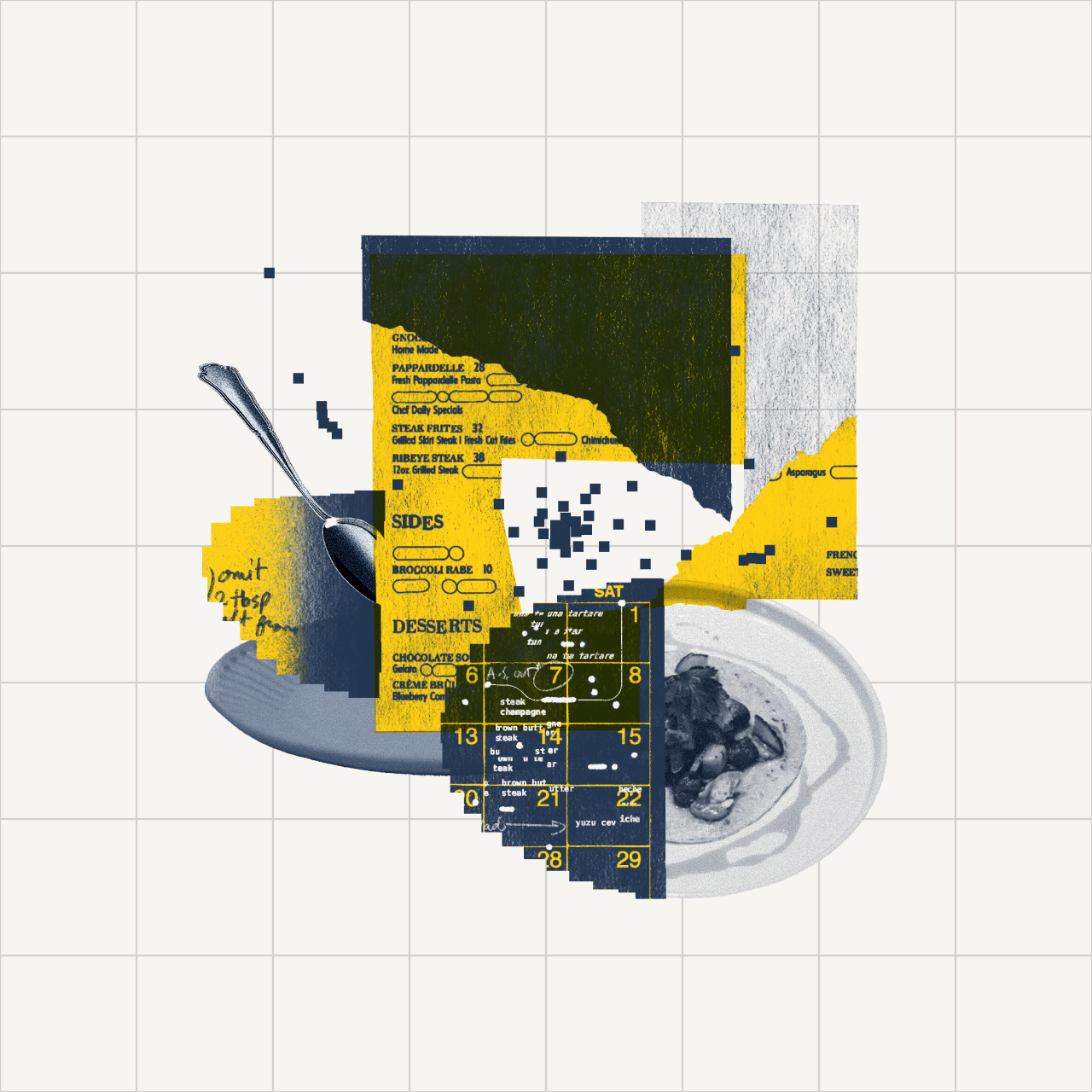.png/_jcr_content/renditions/hero_square%20(2).webp)
Lightening the mental load: How Jam was built for parents, by parents
Published on October 02, 2025
Between doctor’s appointments, daycare drop-offs, and school pickups, parents can feel like they have 500 tabs open in their brains. For Jessica Etting, a screenwriter-turned-tech founder and mom of three, that mental load was a challenge to be solved. But when she searched for scheduling tools that could help her family, she came up empty. So she teamed up with her sister, Amanda Roessler, to build what they couldn’t find, all with the help of Dropbox.
The result is Jam, a family scheduling app that treats the household like a shared project. It’s a calendar, to-do list, and family assistant in one, designed to remove the constant legwork of inputting, updating, and organizing schedules.
Jam’s innovation lies in its simplicity and how it helps balance the mental load among caregivers. “There are a number of societal and systemic things that can lead to mental load, and there’s a lot of great work being done on that front,” says Etting, Jam’s co-founder. “But there’s also the pragmatic question of: How are we actually doing this at the micro level in the home?”
This question sits at the heart of Jam’s design. Forward any email or text to Jam, and it parses the details, adds events, and suggests prep steps, consolidating everything into a single, streamlined plan on the calendar. When accounts have a single default owner, it usually falls on one parent to manage it all. In Jam, each adult in the same account has an equal set of permissions and access. It’s a case study in why it’s essential for founders to design from their own experiences: When you’ve lived the edge cases, you build for them.
While Jam helps families keep their home life in order, behind the scenes, its founders rely on Dropbox to cut through the chaos and bring clarity to their work. From early wireframes to brand docs and demo reels, Jessica and Jam’s CPO Amanda use Dropbox to store and share every iteration, asset, and video. As they grow, working with more external partners and keeping their data secure, Dropbox continues to be the connective tissue, whether they’re at their desks or approving files from the sidelines at soccer practice.
We sat down with Jessica to chat about how Jam helps families ditch the chaos, why shared visibility is key to managing a household, and how Dropbox keeps her team running smoothly.
Can you take us back to the moment Jam was born? What frustrations or needs inspired you?
I’m a mom of three, and before I started Jam, every day really did feel like a lot of chaos. We were operating, at best, 24 hours in advance. I’d go to bed at 11 pm. Things would ping through my brain. I’d email myself, and then wake up to eight random emails from myself. I was like, this is a terrible system. Things were always falling through the cracks.
My sister, then a mom of two, was at my house after her second child was born, asking, “What’s the app everybody’s using to stay on top of scheduling, to-dos, and shopping, with a partner and a caregiver?” I told her there wasn’t one. That night, we asked a group of working-mom friends, “What system do you use?” Everybody had a different, ad-hoc, cobbled-together system, but everyone felt the same overwhelm of the mental load.
My sister has a background in software. I have a background in female-forward storytelling, marketing, and branding. We knew exactly what we wanted to build. She had worked in project management software on the corporate side, and no one else was doing this. We started wireframing that weekend. Once we created something we felt would really work, we decided to go for it and launch Jam.
What do you think contributes to parental overwhelm, and how does Jam try to address it?
A big obstacle is visibility. One partner has information that the other doesn’t. In Jam, visibility had to be very clear: All adults in the home, and anyone they invite, have full visibility.
A lot of software makes one person the manager. We can’t have that; otherwise, Mom becomes the default manager, putting it all in and inviting everyone. We wanted it to be easier to loop everybody in. We designed something that speaks to adults and is easy enough for kids, so that they can see their schedule and what they need to do.
We also added features like forwarding event emails to Jam, so that we can put the events on the calendar for you. We used to get school newsletters packed with info. My husband would forward them to me, implicitly to “get it on the calendar.” Now, anybody in the family can forward [things] to Jam, and Jam becomes that administrative assistant. It shouldn’t be a gate-kept secret who’s going where and who’s driving. Everyone can see it and take part.
Early on, how’d you and your sister keep all the moving parts organized?
We’re organization junkies. We love a list and a spreadsheet. We both collaborate on a lot of things, but we’re very clear on who owns each high-level item. My sister owns more of the software side; I own other areas. That kind of delegation prevents stalls.
We share things all day long. Having space to store everything is essential: wireframes, email journeys, copy, product photos, and screen recordings for demos. If we’re not organized, we create duplicate work. We use Dropbox, especially for organizing and collaborating. When we bring in an editor or a consultant, being able to share a folder and say, “Everything you need is here,” is so helpful.
How has Dropbox shaped the way you and your team work?
In the early days, we used Dropbox with our designer, keeping iterations in order so we could go back and see what had changed. We use it with pretty much every consultant. Our branding company delivered everything via Dropbox, and we still use that shared folder for branding specs. Same with our bookkeeper and a fractional CMO.
On the video side, I’m constantly editing testimonials and social videos. I like to give high-level notes first, where the story is. It’s tedious to watch a 10-minute video to find moments. My CMO and I go back and forth on videos, and seeing the transcript makes it so clear.
Honestly, it feels like a seamless assistant—click, and there it is. And I’m often working from my phone, in the car, or on the soccer sidelines. Working in Dropbox on my phone is easy and intuitive, which is rare. We also use Dropbox for fundraising. In our last raise, we used Dropbox for the data room, with highly confidential docs that investors needed to review. As we grow, we can scale what we use. Dropbox feels like a home we won’t outgrow.
What creative or surprising ways have you seen families use Jam?
We’re big proponents of a “Sunday sync.” Partners and older kids sit down, look at the calendar at a granular level, and spot issues early. Maybe you scheduled a meeting, but you were supposed to do pickup. It brings down chaos. We also suggest adding a “joy edit.” Where’s your tennis hour? Where’s my hike with a friend? If calendaring feels only like work, make space for what fuels you.
We’re also seeing multigenerational use: teens and early-20s kids living at home, a grandparent, sometimes a caregiver. Everyone uses Jam to coordinate care.
Data-wise, 75% of first signups are by a female partner and 25% by a male partner. Usage evens out over the first few weeks. Now we’re asking, how can we encourage men to add things to the list, conceive tasks, and execute them?
What features or workflows are you excited about next?
We’re building out our AI even more. Today, you can forward things to Jam; we’ll get it on the calendar and suggest what needs to happen ahead of time. We’re turbocharging that, both in terms of what you send and how you send it. Screenshot a WhatsApp thread about a group playdate, send it to Jam, and we’ll figure it out and get the result on the calendar.
Information hits families in many ways, like email, a flyer, or a WhatsApp message, and you spend 10 minutes just finding it. We want it to be one click into Jam, where everyone can see it in a way that’s easy to understand. And with smarter suggestions: If there’s a birthday party on the calendar, you might not realize until five minutes before that you didn’t get a present, so we’ll try to remind you five days ahead.
At the end of the day, Jam is like your family’s admin assistant. It takes all those tedious tasks out of your head so you can stop scrambling and start actually living.
This interview has been edited for clarity and concision.
 Dropbox Dash: The AI teammate that understands your work
Dropbox Dash: The AI teammate that understands your work




